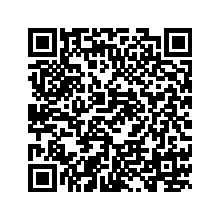学术资讯|我系秦际明副教授发表文章:论阴阳五行的人性论构造与伦理生成
论阴阳五行的人性论构造与伦理生成
论阴阳五行的人性论构造
与伦理生成
本文原载于《哲学与文化》第五十一卷第九期
秦际明
中山大学哲学系(珠海)副教授
作者简介

秦际明,中山大学哲学系(珠海)副教授。
内容摘要:
关键词:
❖
自先秦,不同思想家对人性有着不同的理解与规定,大致有性善、性恶、性朴、性三品、性善混、性无善恶及五常之性等不同的观点,可归纳为先天人性论与后天人性论两类,分别对应性的不同含义,前者以人的类本质或某种先天之物为性,而后者以生为性,即人生来就有的习性。
现代学界研究儒家人性论主要侧重于思孟—程朱一系的性善说,强调人之性与其所谓本体论的贯通,于阴阳五行系统中的人性论不甚注重,视之为一种宇宙生成论。
一
人性论的理论难题与阴阳五行人性学说的提出
孟子道性善,告子以为性可善可恶,并不等同于善。
诸种人性论各有其理论困难之处。
「性即理也。
性恶论固然可以很好地解释现实中的人之性情的非善性,但难以说明的是规范性价值的来源,以及人与规范性价值的关系是如何建立起来的。
先秦不同的人性学说在汉代被规整到两种看似不同的人性论中去了,即性朴论与五常之性说。
二
性情的阴阳五行构造
先秦哲学以道为核心,以天为道的最高体现,进而产生天地自然与人伦社会的秩序,但天道与万物的关系需要明晰而系统地说明。
在对世界构造的解释上,先秦已经产生了天地、道、阴阳、五行、人、物、自然等范畴,并将阴阳与五行明确联系起来,形成系统的结构,以解释万事万物的演生与本质,至少在《管子》一书中即已实现阴阳与五行学说的融合,阴阳五行学说成为万物构成及其生化的系统是理解事物的基本模式。
五行分体性,「体者,以形质为名,性者,以功用为义,以五行体性,资益万物」。
人在天地之中,与万物一样皆是阴阳和合而生,人之性情本诸天道,《易纬.乾坤凿度》云:
从五常与五行的关系来说,木为少阳,四时在春,象征着万物的形成与生长,是生命蓬勃的气象,所以阳气之生谓之仁,仁者即是生生之德。
汉代所说的五常之性似乎亦蕴含着一种善的潜质。
五常之性的内容是仁、义、礼、智、信,就其实现方式来说,则表现为情,喜、怒、哀、乐、爱、恶。
三
阴阳五行性情学说所理解的天理与善恶
以气为本,如何理解天理?
强调气之为天道、天理的实现方式,以天道、天理为气的某种结构状态与趋势,这在阴阳五行结构为基础的性情论上的反映就是对情的基础性意义的凸显。
《五行大义》云「阴阳合德,五行之本」, [25] 五行之化成即象征着万事万物,性为阳,情为阴,人即是阴阳合德。
人之善恶是人性的实现性,是性情合德而生,那么性情结合过程中所具有的不同结构与趋势则显现出不同的善恶之性。
性情合德而生善恶是一种人性之结构方式,性与情不同而又相互作用,使人潜在的成善可能性实现其为善或不善。
四
阴阳五行学说中的伦理生成与形上学
人们经常会把元气论或气本论理解为一元论,其实以元气为本的阴阳五行学说既非一元论,亦非二元论。
天地万物同构,人在其中,故天人亦同构。
同构并不是说人和世界具有物理意义上的统一性定理,可以解释所有现象,而是人对世界的把握方式。
自孟子至理学所构造的性善论,源自于对事理本身的当下直观。
理学所谓性善,亦自性之所成而言。
从天人关系的角度来说,性善说突出了天人关系中属天的一面,即人之性是自天获得的,而不是人自己成就的。
性善还有一个特别的理由,那就是人固有自我认同与自我完善的内在需要,也即人活着须有意义。
本于阴阳五行的性情学说将性情与阴阳五行的变化看作是同一过程,将伦理与善恶看作是对事物变化过程中不同趋势与状态的价值判定,这样既解释了性情的实质过程,也阐明了善恶之性的根源。
注释
参考文献
On the Construction of Human Nature Theory and Ethical Generation of Yin Yang and Five Elements
Jiming QIN
(Profession)
Abstract: The ancient Chinese theory of human nature is based on the theory of temperament that generates the Yin, Yang, and five elements. From the Warring States period to the Han Dynasty, the concept of Yin Yang and Five Elements gradually improved, becoming the main system for Chinese philosophy to understand the world structure. Things are born from the combination of Yin and Yang, while people have Yin and Yang, which is manifested by the use of temperament for physical purposes. The different proportions and transformation trends of yin and yang structures are specifically manifested in the five elements, which each have the nature of becoming or destroying good or evil, and are the foundation of the celestial physics of human relations. The Nature doesn't matter whether it is good or bad, and only when there is an excess or deficiency in the expression of emotions towards nature can there be good or evil. Therefore, temperament is mutually Yin and Yang, and cannot be separated. The changes in temperament and the five elements of Yin and Yang are the same process, while ethics and good and evil are the value judgments of different trends and states in the process of things changing. This not only explains the substantive process of temperament, but also elucidates the root of the nature of good and evil. On this basis, highlighting the value of goodness as a nature, as the purpose of human activities, and applying it through politics and religion, constitutes a complete theory of the connection between Tian and humanity. The theory of human nature can be divided into two types: innate human nature theory and acquired human nature theory. The theory of Yin Yang Five Elements human nature is a type of acquired human nature theory that emphasizes the achievement of good deeds and has special moral practical significance.
Key Terms: The human nature and Temperature, Good and Evil, Ying and Yang, The five elements, To achieve goodness
来源|哲学与文化
初审|韩 珩
审核|卢 毅
审核发布|屈琼斐


